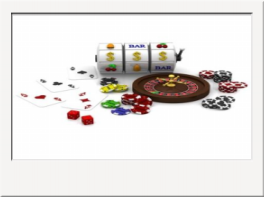


JOIN THE GREATEST POKER STRATEGY SCHOOL FOR FREE
WITH OVER 2 MILLION MEMBERS
WITH OVER 2 MILLION MEMBERS
Learn How To Play Successful Online Poker




''...understanding poker player types and playing styles can dramatically increase your winning chances..."
Gaining an appreciation of the poker player types and playing styles that you may encounter in any poker game is important, and developing that understanding in during a game to identify your opponents playing styles will set you on a strong patch for success.
Player types vary, and you'll get valuable advantages if you can identify the types of players among your opponents in any game, though remember that they (as well as you) should be mixing your styles of play throughout the game to get maximum advantage. Be careful that you don't misinterpret styles because of this.
There are four main poker playing styles which describe the type of player you're facing, though of course there are many variations in between:
1. Loose-Passive
2. Loose-Aggressive
3. Tight-Passive
4. Tight-Aggressive
The first part of each style refers to which the style in which the hands are being played.
The term "loose" describes someone who plays a wide variety of hands, with very loose players often seeming to play hands indiscriminately.
"Tight" describes a player who is more selective and only plays good hands.
The second part of each style refers to the betting style - passive players call often and seem to avoid raising decisions, and aggressive opponents make regular bets and raises. In general, the most effective poker style is tight-aggressive. We'll come to the reasons why further below.
First let's review and analyze each style further and learn the best strategies for winning against them…
Loose - Passive
Loose-passive is normally the most "amateur" style of play, and the style you'd most likely see from a beginner. These players like to play a wide range of starting hands and rarely fold their hands before the flop. They'll check-call after the flop (and on the turn and on the river) with low value hands.
When you're up against this type of player, you ideally want to wait for a good hand and then bet into them consistently. Be careful not to bet too high or you may scare them out of the hand. Usually the best strategy is to "milk" them for chips before the flop, after the flop, after the turn, and after the river. If you're going to bluff a loose-passive player, do it aggressively otherwise they may call. Also, be selective when you attack. The loose passive player might have top pair and still just check-call it. So be careful.
Loose - Aggressive
It's possible to lose heavily against a manic loose aggressive player if you don't use the proper strategy against him. With loose aggressive opponents you need to have patience and be calm when he hits a good hand and beats you. This style of player is most likely to send you on tilt.
As an example, a loose aggressive style player can often play poor starting hands...including raising with them. When he does hit a good hand, no one knows what he has, which is part of the reason why he's so dangerous. In order to beat a manic player you must wait for a strong hand. The manics weakness is that he HATES being raised or "bullied". Also, most manics feel "pot-committed" much more easily. When you get heads-up with a manic (and you have a strong hand), raise him or make small bets that entice him to bluff. Let him or her come to you... let him or her make the wrong move at the wrong time and you'll be able to take their chips. Often all at once.
Tight - Passive
Tight-passive players are normally easy to read and defeat. If they bet or raise, you have a good clue to hand strength and it's often best to fold. Otherwise, you can consistently represent the flop and bluff them out of pots. Tight-passive players will often "survive" for a long time in a game because they never risk too many chips. Use bluffs, semi-bluffs, and aggressive bets to take a tight-passive player's chips.
Tight - Aggressive
OK, so now we're on to the preferred Texas Holdem playing style... and that's tight-aggressive. Tight aggressive players make wise choices on which hands to play, usually either raising or folding before the flop. After the flop, they'll make aggressive bets if they've got a hand or if they raised pre-flop. The reason a tight-aggressive playing style is so effective is because you only risk chips when you've got a good hand. But when you do risk chips you risk a LOT of them... so it only takes a couple of wins to build a good sized stack.
The drawback of playing with a tight aggressive style is that it's often easy to read. This style can often build a tight table image... and when that happens, your opponents won't give you action for your big hands. The solution is to INTENTIONALLY establish a LOOSE table image... by carefully choosing times in the game to play like a "manic". For example... once in awhile... show a bluff. Especially near the beginning of the game. You'll want to do this when you sense weakness and have good positioning, just as you'd do with any good bluff. A huge advantage of playing tight-aggressive is that many of your opponents won't distinguish between LOOSE and AGGRESSIVE.
If you raise aggressively with strong hands... and then mix it up with the occasional well-timed bluff... you'll be able to throw your opponents off and keep them guessing every step of the way.
You can read more about poker player types and styles at this useful webpage at TheHendonMob.com.
Player types vary, and you'll get valuable advantages if you can identify the types of players among your opponents in any game, though remember that they (as well as you) should be mixing your styles of play throughout the game to get maximum advantage. Be careful that you don't misinterpret styles because of this.
There are four main poker playing styles which describe the type of player you're facing, though of course there are many variations in between:
1. Loose-Passive
2. Loose-Aggressive
3. Tight-Passive
4. Tight-Aggressive
The first part of each style refers to which the style in which the hands are being played.
The term "loose" describes someone who plays a wide variety of hands, with very loose players often seeming to play hands indiscriminately.
"Tight" describes a player who is more selective and only plays good hands.
The second part of each style refers to the betting style - passive players call often and seem to avoid raising decisions, and aggressive opponents make regular bets and raises. In general, the most effective poker style is tight-aggressive. We'll come to the reasons why further below.
First let's review and analyze each style further and learn the best strategies for winning against them…
Loose - Passive
Loose-passive is normally the most "amateur" style of play, and the style you'd most likely see from a beginner. These players like to play a wide range of starting hands and rarely fold their hands before the flop. They'll check-call after the flop (and on the turn and on the river) with low value hands.
When you're up against this type of player, you ideally want to wait for a good hand and then bet into them consistently. Be careful not to bet too high or you may scare them out of the hand. Usually the best strategy is to "milk" them for chips before the flop, after the flop, after the turn, and after the river. If you're going to bluff a loose-passive player, do it aggressively otherwise they may call. Also, be selective when you attack. The loose passive player might have top pair and still just check-call it. So be careful.
Loose - Aggressive
It's possible to lose heavily against a manic loose aggressive player if you don't use the proper strategy against him. With loose aggressive opponents you need to have patience and be calm when he hits a good hand and beats you. This style of player is most likely to send you on tilt.
As an example, a loose aggressive style player can often play poor starting hands...including raising with them. When he does hit a good hand, no one knows what he has, which is part of the reason why he's so dangerous. In order to beat a manic player you must wait for a strong hand. The manics weakness is that he HATES being raised or "bullied". Also, most manics feel "pot-committed" much more easily. When you get heads-up with a manic (and you have a strong hand), raise him or make small bets that entice him to bluff. Let him or her come to you... let him or her make the wrong move at the wrong time and you'll be able to take their chips. Often all at once.
Tight - Passive
Tight-passive players are normally easy to read and defeat. If they bet or raise, you have a good clue to hand strength and it's often best to fold. Otherwise, you can consistently represent the flop and bluff them out of pots. Tight-passive players will often "survive" for a long time in a game because they never risk too many chips. Use bluffs, semi-bluffs, and aggressive bets to take a tight-passive player's chips.
Tight - Aggressive
OK, so now we're on to the preferred Texas Holdem playing style... and that's tight-aggressive. Tight aggressive players make wise choices on which hands to play, usually either raising or folding before the flop. After the flop, they'll make aggressive bets if they've got a hand or if they raised pre-flop. The reason a tight-aggressive playing style is so effective is because you only risk chips when you've got a good hand. But when you do risk chips you risk a LOT of them... so it only takes a couple of wins to build a good sized stack.
The drawback of playing with a tight aggressive style is that it's often easy to read. This style can often build a tight table image... and when that happens, your opponents won't give you action for your big hands. The solution is to INTENTIONALLY establish a LOOSE table image... by carefully choosing times in the game to play like a "manic". For example... once in awhile... show a bluff. Especially near the beginning of the game. You'll want to do this when you sense weakness and have good positioning, just as you'd do with any good bluff. A huge advantage of playing tight-aggressive is that many of your opponents won't distinguish between LOOSE and AGGRESSIVE.
If you raise aggressively with strong hands... and then mix it up with the occasional well-timed bluff... you'll be able to throw your opponents off and keep them guessing every step of the way.
You can read more about poker player types and styles at this useful webpage at TheHendonMob.com.
Additional Resources - Player Types and Playing Styles
Professional-Poker.com describe the different player types in an easy to read article, with thehendonmob website offering a similar detailed write up.
The Bartend.com cover an additional couple of playing styles.
Professional-Poker.com describe the different player types in an easy to read article, with thehendonmob website offering a similar detailed write up.
The Bartend.com cover an additional couple of playing styles.




















